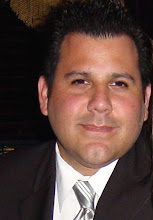
Mortgage rates dropped to another record low this week following the Fed's move to pump hundreds of billions of dollars into the U.S. economy. Though officials hope that buying Treasuries with newly-printed money will give the slow-growing economy a big boost, the move likely won't give today's homeowners much relief. Any Questions about refinancing please call Robert at 562-673-1136
Now is one of the cheapest times in decades to finance a home, but few are actually locking in record low mortgage rates. This isn't just because many don't qualify for refinancing as home prices plummet and banks continue to enforce tighter lending standards.
It's also because many owners who locked in relatively low rates between 2003 and 2005 don't think it's worth refinancing, according to a U.S. Federal Reserve study of the mortgage market released in September. This is a factor that has largely been overlooked. Please visit my website if you have questions about principle reduction www.shortrefiusa.com
It's true millions have been trying to redo the terms of their home loans to reduce their monthly payments. Yet a sizable group also thinks their current interest rates are at least bearable – they don't want to spend the money or time to take out a new loan for only slightly lower rate.
Mortgage rates are at their lowest since at least 1971. The rate for a 30-year fixed loan fell to 4.17% in the week ended Thursday from 4.24%, according to Freddie Mac (FMCC). The average 15-year rate declined to 3.57% from 3.63%.
But interest paid on the vast majority of home loans is much higher than the record rates, according JPMorgan, which tracks the outstanding U.S. mortgages by major lenders including Freddie Mac and Fannie Mae (FNMA). As of October 31, only about 16% of fixed-rate mortgages and 12% on floating mortgages paid between 4% to 4.99%.
A relatively bigger proportion, about 27%, are adjustable rate mortgages that fluctuate with the market and pay a lower rate ranging between 3% to 3.99%. Still, at least half of outstanding home loans still pay 5% or higher regardless of whether a fix or floating rate.
Historically when rates have dropped significantly, there's typically a flurry of refinancing.
And indeed, that happened recently when the average annual rate for a prime-quality 30-year fixed rate mortgage fell abruptly at the end of 2008 and through 2009, falling below 5% in April and May. Refinancing boomed, peaking to more than 645,000 loans in May 2009 before dropping back to monthly levels similar to those seen in 2006 and 2007, according the Fed's report.
But the recent surge in refinancing doesn't compare to what was seen historically – it's in stark contrast to the levels seen between 2001 to 2003 when rates fell sharply. In 2003 when rates were slightly more than 5%, the volume of refinance loans rose to more than 15 million, markedly greater than volumes in 2009 of about 5.8 million loans.
"There's a lot of head scratching right now as to why people aren't refinancing," says Freddie Mac Chief Economist Amy Crew Cutts. "The applications are high but the closings are low."
Cutts points to various factors, including high unemployment, home values falling well below the balances of mortgages and stricter lending standards at many major banks.
Whatever the reason, it appears homeowners aren't benefiting much from the Fed's policy prescription to accelerate the economic recovery. Who knows how low mortgage rates will go or if it will even matter months from today.
Who pays what? E-Mail Rob at Robsavestheoc@gmail.com
Robert Vaughan
Vice President/ Managing Partner
(562) 673-1136

No comments:
Post a Comment